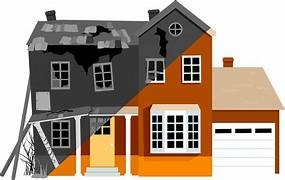Table of Contents

Ever dreamt of turning a rundown house into a cash cow? House flipping isn’t just for reality TV stars—it’s a real way to make money if you know the ropes. Here’s a straightforward guide to help you get started!

Choosing Your Real Estate Market
First things first, you need to find the right market. This means looking for a place where the population is growing, there’s a good number of houses to buy, and the market trends are promising. A growing population usually means an increasing demand for housing, which is good for flippers. More houses on the market give you more options to find a suitable property to flip. Promising market trends mean property values are expected to rise, increasing your potential profit.

Financing Your House Flipping Adventure

Private Money Lenders: These are friends or family members who lend you money in exchange for a share of the profits. This can be a great option if you have a supportive network, but it’s important to make sure everyone understands the risks involved.
Hard Money Lenders: These lenders focus on the property’s value and potential rather than your personal financial situation. They can provide funds quickly, but their loans often come with higher interest rates and shorter repayment periods. This makes them more expensive than traditional loans but they are useful if you need money fast.
Building Your House Flipping Team

Lender: This person provides the funding for your project. They can be a private money lender or a hard money lender.
Realtor: A good realtor can help you find properties to buy and can assist with pricing and selling your flipped house. They understand the local market and can provide valuable insights.
Escrow Officer/Title Company: These professionals handle all the legal paperwork and ensure that the property transfer is smooth and legitimate. They check for any legal issues that might affect the sale.
Finding Deals

MLS (Multiple Listing Service): This is a database of properties for sale. You can set up auto-searches to notify you when new listings that meet your criteria become available.
Wholesalers: These are individuals or companies that find and contract properties at a discount and then sell those contracts to investors. They can be a great source of deals, especially if you’re new to flipping.
Keyword Searches: Use specific terms related to distressed properties, foreclosures, or fixer-uppers in online real estate databases. This can help you find properties that might not be listed in the usual places.
Escrow and Assigning Contracts a.k.a The Legal Stuff

Assignment Contracts: If you’re not planning to flip the house yourself but want to pass the deal on to another investor, you can use an assignment contract. This allows you to transfer your rights to the property to another buyer for a fee.
Wholesaling: This involves finding a property, getting it under contract, and then selling the contract to another buyer. It’s a way to make money without having to actually renovate the property.
Direct-to-Seller Marketing

Cold Calls and Texts: Reaching out to property owners directly to see if they’re interested in selling.
Ads: Placing advertisements in local media or online to attract potential sellers.
Direct marketing can be effective but requires some upfront investment and a well-thought-out plan to reach the right people.
Buying and Rehabbing
Purchasing: Go through escrow and understand all the contract details. Make sure all legal aspects are covered and that the title is clear.
Rehabbing: Hire reliable contractors, get bids for the work that needs to be done, and keep track of the progress. Choose materials and finishes that will appeal to potential buyers and add value to the property.
Step-by-Step Process on how to flip houses with no money
| Step | Description |
|---|---|
| Market Selection | Choose a market with good potential for profit. |
| Financing | Secure funding for your project. |
| Team Building | Assemble a reliable team of professionals. |
| Finding Deals | Look for properties that can be bought at a discount and have potential for improvement. |
| Legal Handling | Take care of all the legal paperwork and contracts. |
| Rehabbing | Renovate the property to increase its value. |
| Selling | List the property and sell it for a profit. |
Joining a Program Like Wealthy Investor
If you want extra help, consider joining a program like Wealthy Investor. They offer:
| Aspect | Description |
|---|---|
| Market Selection | Guidance on picking the right location with potential for profit, including local market trends and economic factors. |
| Team Building | Help in finding and assembling the right professionals for your flipping crew, such as contractors, real estate agents, and inspectors. |
| Deal Evaluation | Tools and methods for assessing the potential of deals, including property valuations, renovation costs, and return on investment calculations. |
| Finding Deals | Assistance in locating properties that are undervalued or in need of renovation, including strategies for finding hidden gems. |
| Direct-to-Seller Tools | Resources for marketing directly to property sellers, including advertising strategies and outreach tools to find off-market deals. |
| Mentorship | Support and guidance throughout your flipping journey, offering advice, tips, and expert knowledge to navigate the process. |
House flipping can be a thrilling and profitable venture if you have the right strategy and team. By choosing the right market, securing financing, building a solid team, finding good deals, handling legal aspects, and effectively renovating and selling properties, you can turn rundown houses into profitable investments. With dedication and a bit of hustle, you can succeed in the exciting world of house flipping. Happy flipping!
FAQs
Is house flipping a risk?
Absolutely, house flipping is like gambling with a high-stakes game. While it can yield impressive profits, it’s also fraught with risks. Think of it as juggling flaming torches – if you don’t know what you’re doing, you might end up singed. Market fluctuations, unexpected repairs, and overestimating your resale value can all turn a potential goldmine into a costly misfire.
What is an example of flipping a house?
Imagine buying a home that’s seen better days – peeling paint, outdated kitchen, and an overgrown lawn. You snag it for a bargain, spruce it up with fresh paint, modern appliances, and a landscaped garden. After pouring in some love (and cash), you sell it for a sweet profit. That’s house flipping in action – transforming a neglected property into a hot commodity.
How long before you flip a house?
Timing in house flipping is like waiting for bread to rise – it takes patience. On average, flipping a house can take anywhere from 3 to 6 months. This includes the time to purchase, renovate, and resell. However, if you’re hoping for instant results, you might be in for a surprise. Good things take time!
How to make money flipping?
Making money flipping houses is all about the magic formula of buy low, renovate smart, and sell high. First, find a property below market value. Then, invest wisely in renovations that add real value. Finally, sell the property for more than what you invested. It’s like cooking – the better your ingredients and technique, the tastier your final dish.
What are the basics of flipping?
Flipping basics are like the ABCs of real estate. First, research and select a property with potential. Next, create a renovation plan that aligns with your budget and market demand. Finally, execute the plan and market the home effectively. It’s a process of turning vision into reality, with a dash of savvy investment skills.
How to do flips at home?
Doing flips at home isn’t about changing your living room décor but rather diving into the house flipping business. Start by learning the ropes of the real estate market, honing your renovation skills, and securing funding. Once you’ve got the basics down, you can start identifying properties to flip, either for personal profit or as a business venture.
How do I start my first flip?
Starting your first flip is like stepping onto the stage for the first time – it can be thrilling and a bit daunting. Begin by educating yourself on the market, budgeting, and renovation. Find a mentor or network with experienced flippers. Then, secure financing, find a property, and embark on your renovation adventure. With preparation and perseverance, you’ll be ready for your debut performance.
What is the 70 rule in flipping?
The 70 Rule in flipping is like a financial safety net. It suggests that you should not pay more than 70% of the property’s After Repair Value (ARV), minus repair costs. For example, if a house’s ARV is $200,000 and repair costs are $30,000, you should pay no more than $80,000 for it. This rule helps ensure you stay within budget and make a profit.
What is the flip formula?
The flip formula is your secret recipe for success in house flipping. It’s: Purchase Price + Renovation Costs ≤ ARV x 70%. This equation ensures that you buy a property at a price that, when combined with renovation costs, won’t exceed 70% of its after-repair value. This formula keeps you on track for a profitable flip.
Latest episodes







